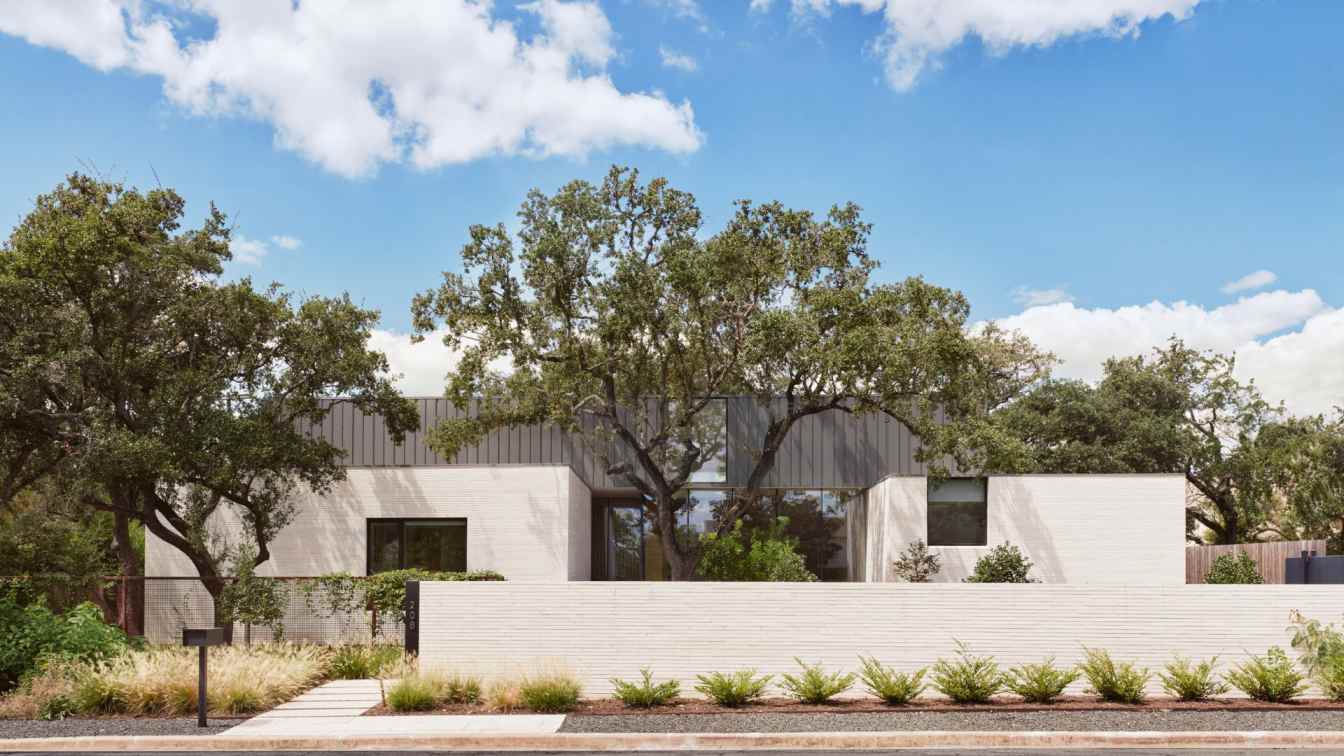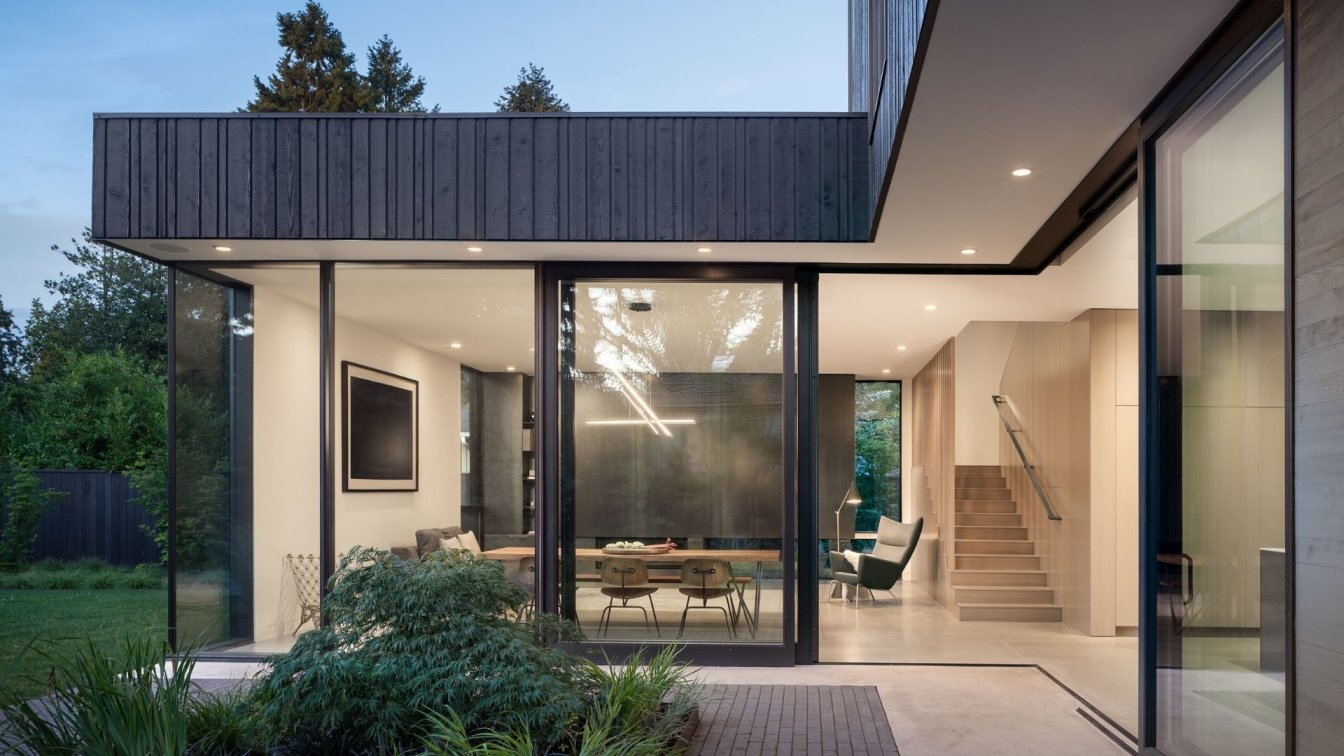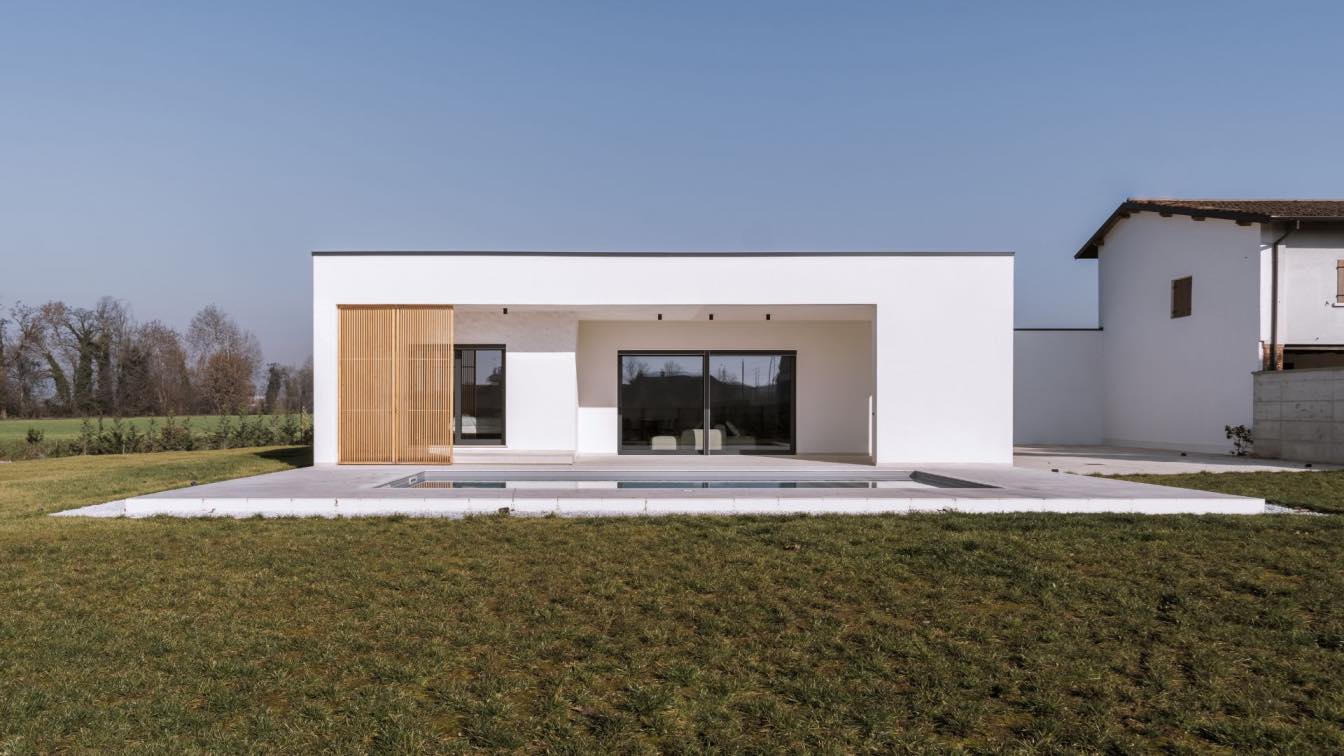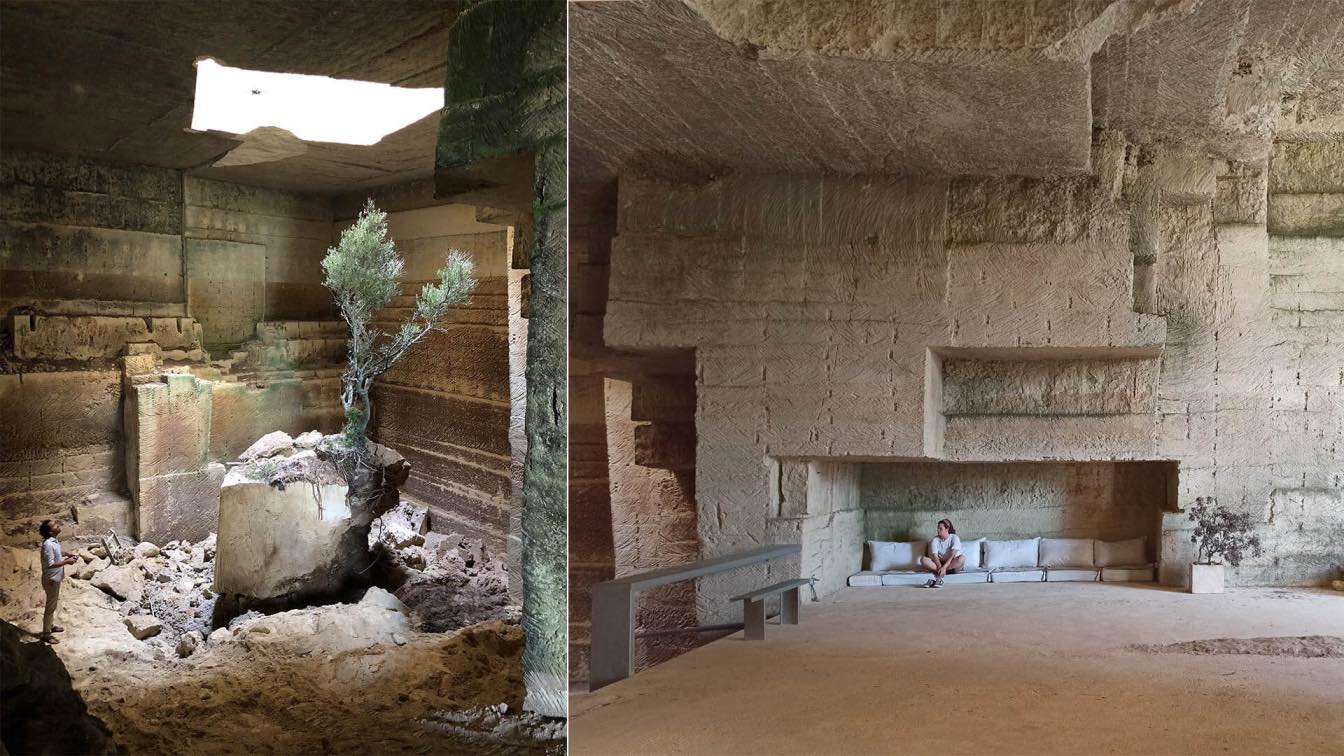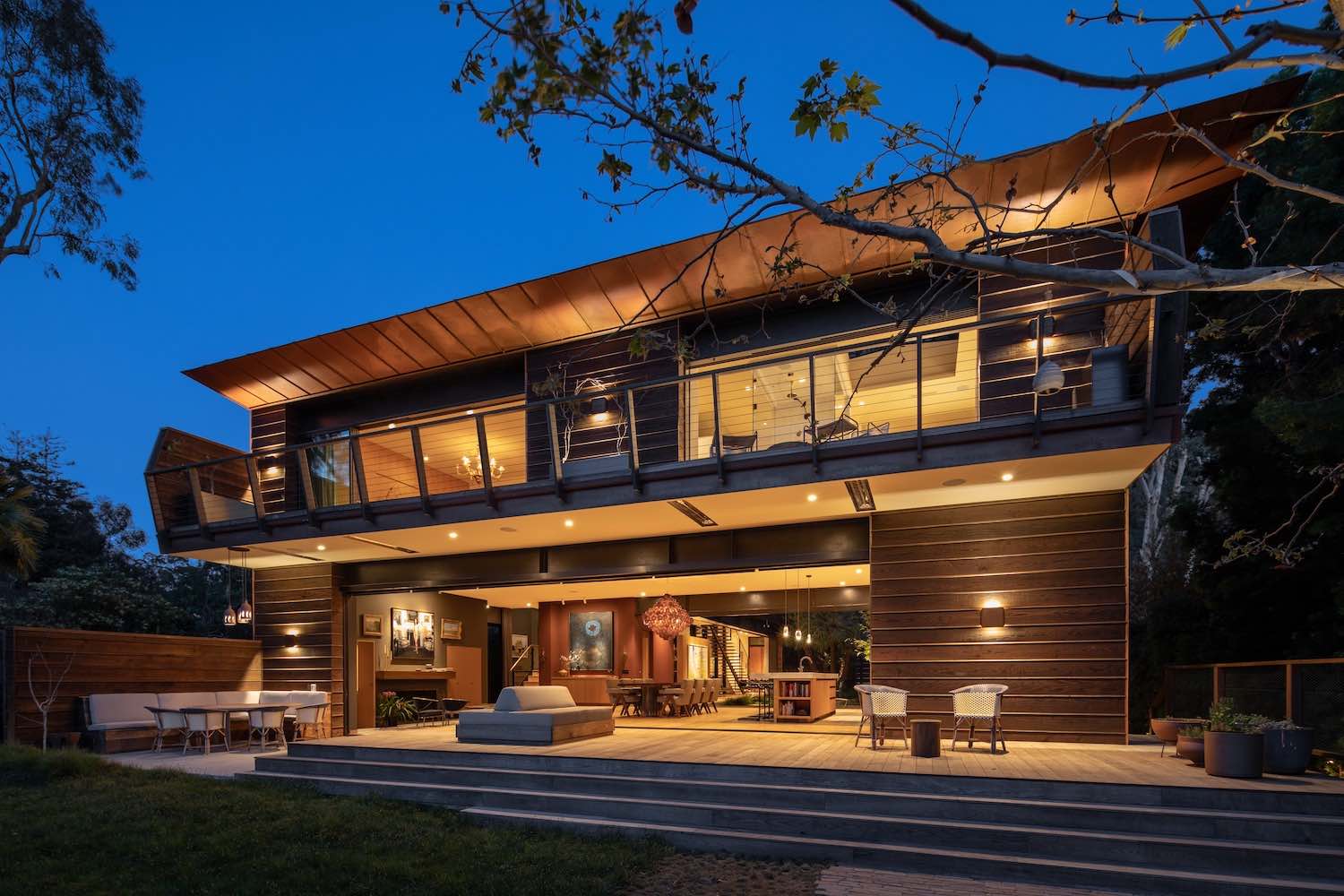Alterstudio Architecture: The Westbrook Residence proposes an alternative model for building in the sprawling post-war suburbs of Austin, Texas. It embraces the changing demographics of this once-modest neighborhood without losing its low-slung character. In a neighborhood where every property is maximizing its allowed FAR (floor area ratio)—either through overwhelming additions or immodest new buildings—the 3,494-square-foot home’s modest scale and demeanor from the street maintains the historic scale of the neighborhood, while its carefully constructed presence allows for an updated disposition more in keeping with its newfound value. In embracing this lower ratio of building to garden, the home is positioned such that its inhabitants live immersed in nature, engaging the different gardens that encircle the building.
Four masonry volumes coalesce around a central living area, that in turn opens onto the adjacent landscapes. Public spaces are defined as the area in-between, with floor-to-ceiling, site-glazed windows, and under a continuous ceiling, while the masonry volumes are delineated in limestone bricks and steel openings—creating a sense of intimacy. Above and enclosing the in-between space is another volume, clad in steel; light chimneys cut into this volume activate the space, providing an unexpected source of light and view. Additionally, the residence is composed of two contrasting ways in which interior rooms are delineated. The masonry volumes define intimate, enclosed rooms, distinct from their adjacencies, while simultaneously defining a dynamic, free-flowing public space in-between that connects directly to the out-of-doors. As a consequence, the family lives here moving between a pre-modern and modern world, settling into a particular space as the appropriate mood takes hold.
The distribution of program into a reasonable-sized home on one floor invites this family to age in place, surrounded by nature and in close proximity to neighbors as well as the amenities of the city of Austin. While the value of this neighborhood will continue to rise and new houses replace existing ones, the hope is that the home might provide a model for future development; where garden is more present than building, and inhabitants are able to live immersed in nature as well as adjacent to neighbors.



















